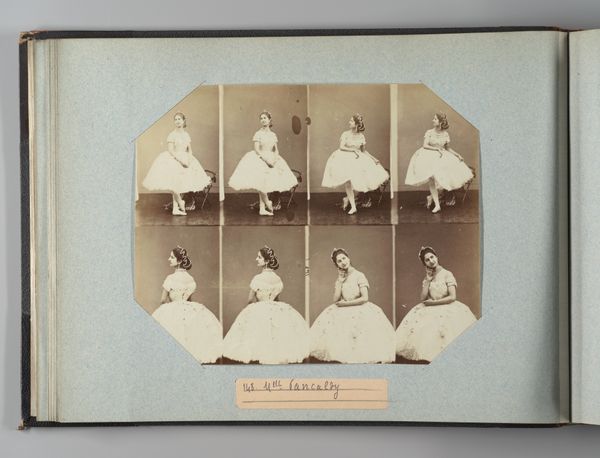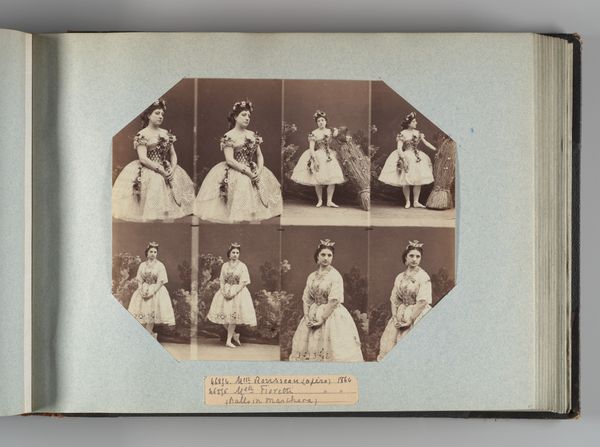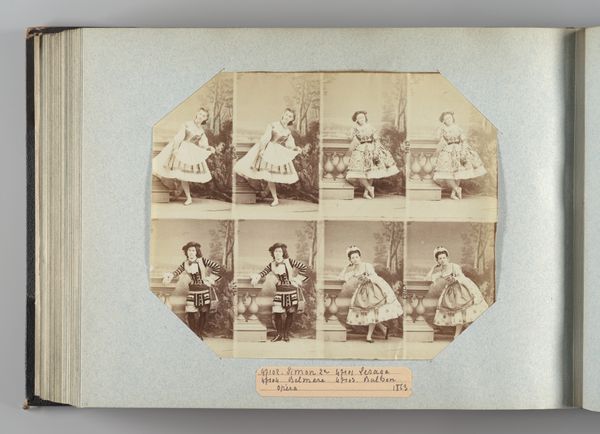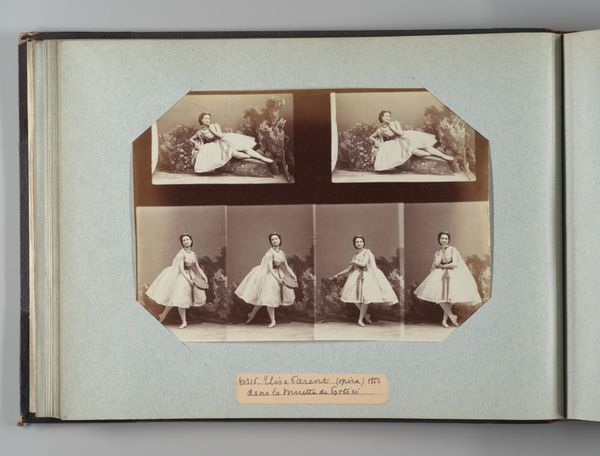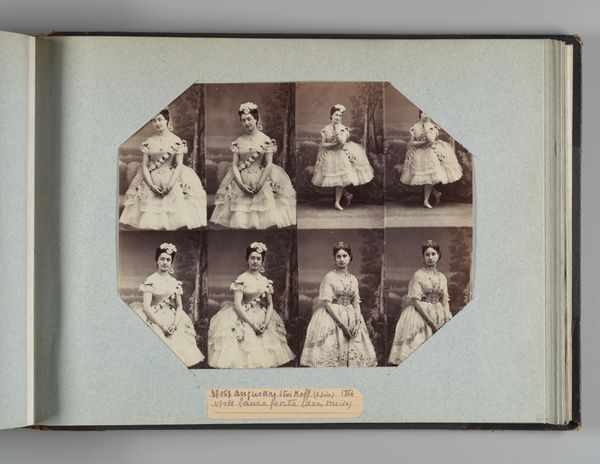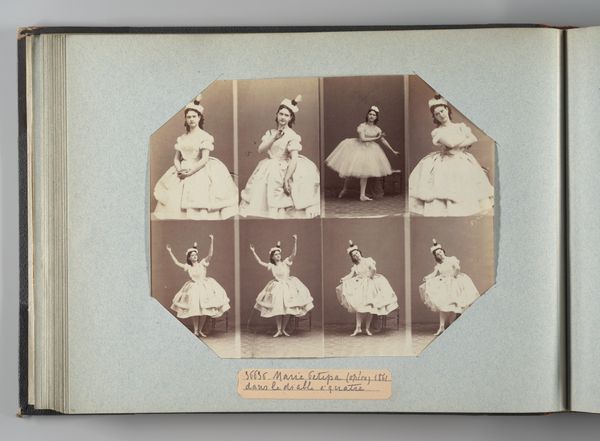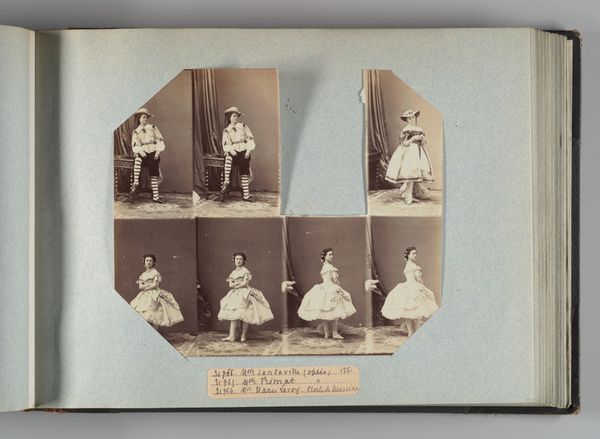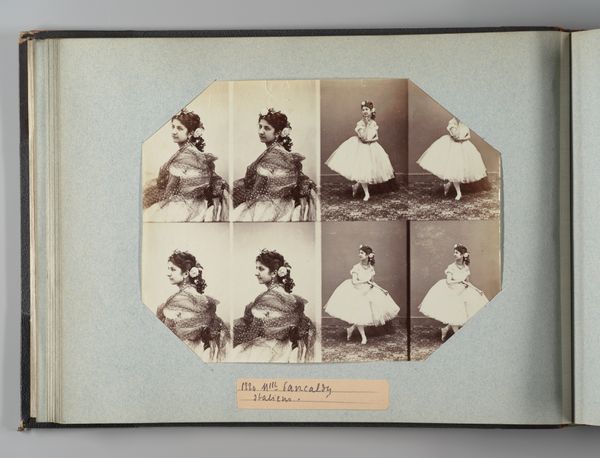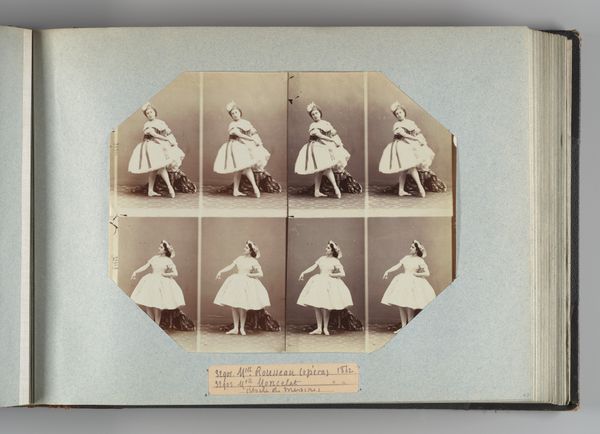
print, photography
#
portrait
#
16_19th-century
# print
#
photography
Dimensions: Image: 7 3/8 × 9 1/4 in. (18.8 × 23.5 cm) Album page: 10 3/8 × 13 3/4 in. (26.3 × 35 cm)
Copyright: Public Domain
Curator: This is a print by André-Adolphe-Eugène Disdéri entitled "Walther 1er; Troisvalets", created in 1861. What strikes you about this series of photographic portraits? Editor: There’s something hauntingly formal about it. It's as though we are dissecting movement through the still eye of the camera. The way the subject—a ballerina, it seems—is arranged in this octagonal format, gives it this strangely captivating quality. The sepia tones also create a sense of removed history, lending to the scene’s austere formality. Curator: Disdéri was a pioneer of the carte-de-visite, a small photograph mounted on card stock. Its affordability made it incredibly popular. In the mid-19th century, portraits were no longer limited to the wealthy. Photography studios democratized image-making, altering the dynamics of visibility and representation in society. Editor: This democratization is vital to understanding the context. It provided access but, considering what and whom was deemed worth portraying at the time, to what extent did those portraits also dictate or normalize oppressive, conventional ideas? Curator: It's a valid critique. Photographic studios could play a role in constructing and disseminating certain ideals, perpetuating stereotypes or reinforcing social hierarchies. Still, for someone like this ballerina, whose identity and history may now be lost, this is now her stage, and her history is available in public archives. Editor: Exactly, so how can we then use the image in constructive ways? For me, it speaks of labor. Dance is such a demanding art; it involves grueling repetition. Each repetition of the images displays this intensity and the subject's commitment to craft, but in a constrained and quite rigid environment. It serves as a fascinating example of capturing a moment of performance through the nascent art of photography. It also captures both the democratizing effects of photography and how art begins to capture performative practices in a new way. Curator: The subject's repetitive poses, coupled with Disdéri's technique, offer layers of understanding. Through mass production and artistic subject, these photographs serve as portals into an era marked by societal change. Editor: Indeed. The images evoke feelings of historical significance and prompt necessary questions on both image democratization, labor and representation during an era of unprecedented social and political transformation.
Comments
No comments
Be the first to comment and join the conversation on the ultimate creative platform.

